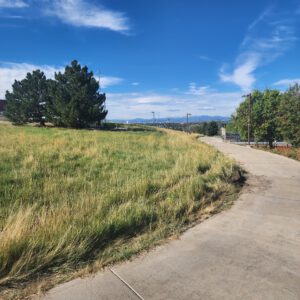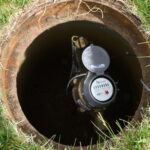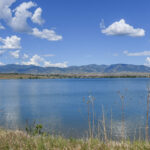Naturally Thornton — Bringing WaterWise Landscaping to City Parks and Open Space
Thornton Water is working with the Parks, Planning, and Community Services Department to enhance the Naturally Thornton project, a collaborative effort to transform high-water-demand, low-use grass areas in Thornton with native and water-wise grasses. The program also establishes new water-wise landscape standards and provides seed mixes for new construction sites on public land.
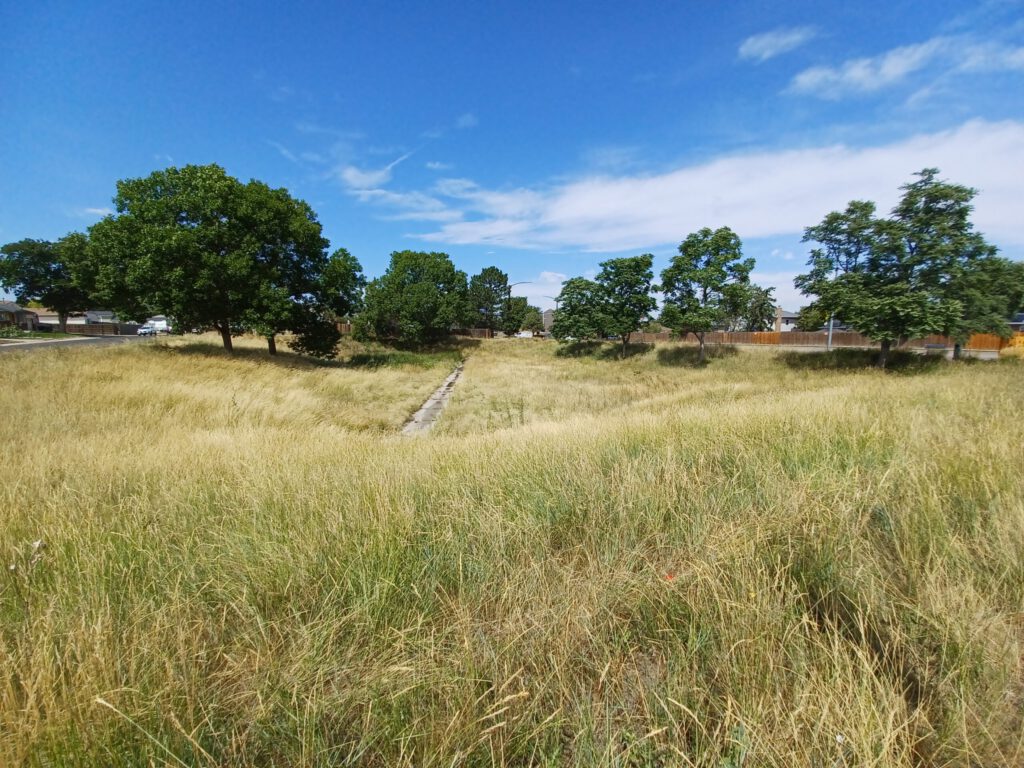
In 2019, the city began replacing existing Kentucky Bluegrass areas, a non-native species to the arid Front Range environment, as well as the entire continent of North America. Thornton focused on converting passive-use sites, or areas of low use where people do not actively recreate, with water-wise grasses. High-use, active locations such as sports fields and other select parks will remain as bluegrass. Turf conversion of passive use sites began with eight city stormwater detention areas designed to collect runoff from rainstorms and decrease flood hazards. As of September 2025, the Parks, Planning, and Community Services Department has converted 13 different sites spanning just over 26 acres.
Why switch to Native Grasses?
Short, green grass lawns found across the U.S. are typically planted with Kentucky Bluegrass or other short-grass varieties. Bluegrass varieties across the United States originated from Europe and Asia, earning the name “Kentucky Bluegrass” due to their success in the region. Kentucky Bluegrass, while versatile and attractive for high-traffic areas such as soccer fields and busy parks, has its drawbacks. This non-native species requires double the amount of water that Colorado native grasses need to thrive. Additionally, Kentucky Bluegrass requires significant maintenance, including weekly mowing, fertilization, and pest control. Many low-water grasses, including both native and non-native varieties, are accustomed to our natural Front Range hydrologic cycles and can thrive with minimal supplemental water and management.
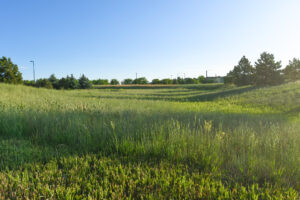
How Do Native and Water-Wise Grasses Support the Local Ecosystem?
Instead of using one grass to replace the sites, the Naturally Thornton team selected multiple varieties of sustainable, low-water-use grasses, such as Western Wheat, Green Needlegrass, Sand Dropseed, Sideoats Grama, and Buffalograss. The new varieties of grass support a biodiverse landscape, require significantly less supplemental water to grow, and only need mowing once or twice per year.
Colorado native grasses have some personality, too! They change color with the seasons, sway in the wind, and even provide a habitat for local wildlife. In fact, Adams County is home to over 100 species of butterflies, including 23 species of skippers that rely on tall prairie grasses for their caterpillars. Thornton’s bluegrass conversions serve as a safe haven for the next generation of butterflies and a food source for birds and other wildlife throughout the city. These grasses also hinder mosquito population growth, since the increased soil drainage from deep roots reduces still water in the grass that provides a breeding ground for mosquito larvae.

Western Wheat:
Native, very adaptive with a strong root system. Low-maintenance, protects against erosion and has a nice blue-green color.

Green Needlegrass:
Native, cool-season drought tolerant bunchgrass with a deep root system. Grows well in clay soils alongside Western Wheat.

Sand Dropseed:
Another native bunchgrass growing in small clumps. Adapts to most soils, establishes easily, needs little water and helps to control erosion.

Sideoats Grama:
Native, drought, and cold tolerant with bright purple and orange flowers that bloom in late summer.

Buffalograss:
Native, drought-resistant warm-season grass requiring little to no care once established. Greens up in mid-May.
What Are the Misconceptions About Native and Water-Wise Grasses?
Water-wise and native grass conversions take time, trial, and error. Typically, converted sites require two to three years to settle in and become established in their new home. Conversions are irrigated during the establishment period. They are eventually reduced to irrigating only in times of excessive drought once established. Conversion sites are also monitored and combined with other water-wise and fire-resistant landscaping features, such as shrubs, native plants, and rocks, to mitigate fire risk for nearby structures. While there are no “fireproof” plant species, the choice of plants, spacing, and maintenance are critical to reducing fire risk to adjacent structures. In some cases, a strong correlation exists between drought tolerance and fire resistance. These plants offer less fuel or have a higher moisture content, both of which help reduce fire hazard.
Grass conversions look different each year as they are established, from dirt when the seeds are planted, to low, sparse grass after one year, to a fuller look in the second year. Native grass conversions take a minimum of three to five years to become fully established.
More Than Just Grass
Thornton’s commitment to beautifying city landscapes into water-wise works of art goes beyond simply replacing high-maintenance grasses. Smaller-scale projects and sites, such as the Thornton Police Training Academy, feature a beautiful array of water-wise plants and grasses. Thornton’s demonstration gardens offer a glimpse into the lush variety found in a water-wise landscape.
For more information about Naturally Thornton and upcoming landscape upgrades across the city, visit the Naturally Thornton Website or call 720-977-5962.
To see the grass conversion areas for yourself, check out this list and photographs of Naturally Thornton locations across the city.
